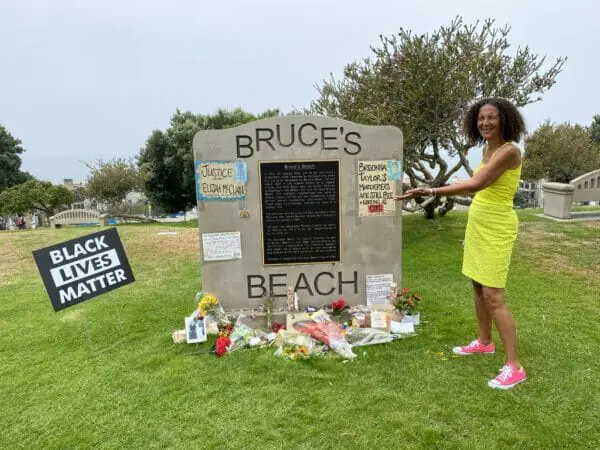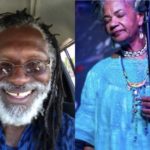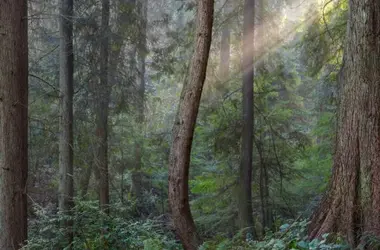

Subscribe to EcoJustice Radio:

A Culture of Recreation in African American History with Alison Rose Jefferson
From the late 1800s to the early decades of the 1900s, African Americans started to occupy and steward recreational sites and public spaces throughout the United States, and thus challenged racial hierarchies while expressing Black identity on the social landscape.
In her book, ‘Living The California Dream: African American Leisure Sites During The Jim Crow Era’, our guest historian Alison Rose Jefferson examines how African American leisure sites were a catalyst for economic individualism, political perspectives, and a broader sense of community for Black society.
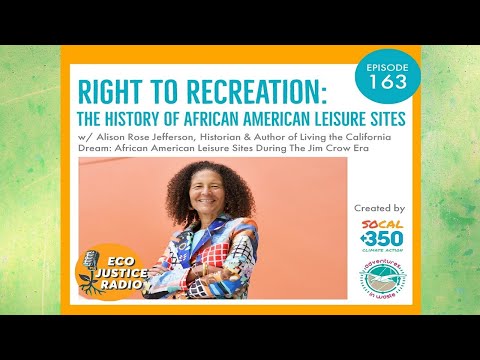
Watch this video on YouTube
In our discussion, Alison demonstrates how Black communal practices and economic development around leisure confronted the politics of racial exclusion in recreational spaces. She shares with us some unique stories of these leisure sites, their rich history, and the influence they still have today.


Historic African American Leisure Sites Around the US
Here is a short excerpt from the interview:
Jessica Aldridge: You are a historian and author. And you have the book Living the California Dream African American Leisure Sites During the Jim Crow Era. And, uh, we’re going to get into the details later in this interview about what all that means, but I want to kick this off by briefly describing what is meant by a leisure site for African Americans.
Alison Rose Jefferson: Well, these sites that I talk about in my work existed during the Jim Crow era. And the Jim Crow era is the era when discrimination was rampant around the United States and segregation against African Americans, no matter where they were in the States, it existed everywhere. And so African Americans set up places that they could control for their recreational activities. And sometimes, these places were communities where they were able to develop housing, develop amusements, and buy property. And other times they were places that it was just one place they were able to get because of particular circumstances.
In California, for instance, in Santa Monica, there was a historic African American community that was able to commandeer this public beach area. It became known as the place where African Americans would feel comfortable hanging out.
Jessica Aldridge: And although your book focuses on California these leisure sites, as you were saying, were happening all over the United States.
Alison Rose Jefferson: Yeah, that’s right, Jessica. These places were all over the United States that African Americans frequented and developed. Some of your listeners in the Michigan area will be familiar with Idyllwild. That was one of the big places that African Americans developed not far from Grand Rapids, Michigan. It was a lake area and they had a couple of tracts of land that they developed for a small cottage community. And, uh, it’s still there. It’s just not as popular as it used to be. In the it was a big place for lots of music activity uh, with all the different popular music acts passing through there during the summer.
Fox Lake in Ohio is another place maybe not as well known to our national audience, but regionally, up there in that Great Lakes area, I’m sure people would be familiar with it. Uh, there was also, say, for instance, in the Upper Eastern area, Sag Harbor in the New York area, on the Atlantic coastline. And up near Boston, you had the Oak Bluff area, on the island of Martha’s Vineyard. And then if you go down south to Florida near Jacksonville, you had American Beach, If you go down to Mississippi, you had an area in Biloxi, Mississippi. So these places were all over the country.
In Southern California, they started a little later, because the African American population really didn’t get to be of substantial numbers here until around 1920. And even with that, those numbers were small in comparison to other parts of the country. But in Southern California, in California in general and in the west in general, by 1920, Los Angeles had the largest African American population in the west.
STORY: Greening Without Gentrification: Expanding Parks and Protecting Communities
Alison Rose Jefferson is a community engaged independent historian and heritage conservation consultant. a third generation Californian, her research interests focus on United States history, the African American experience, historical memory, social justice, and cultural tourism. She is the author of the book, ‘Living The California Dream: African American Leisure Sites During The Jim Crow Era’. in her work she aims to engage broad audiences through applied history projects in the struggle for social justice.
Jessica Aldridge, Co-Host and Producer of EcoJustice Radio, is an environmental educator, community organizer, and 15-year waste industry leader. She is a co-founder of SoCal 350, organizer for ReusableLA, and founded Adventures in Waste. She is a former professor of Recycling and Resource Management at Santa Monica College, and an award recipient of the international 2021 Women in Sustainability Leadership and the 2016 inaugural Waste360, 40 Under 40.
More Info/Resources:
Publications: https://alisonrosejefferson.com/about/publications/
Belmar History+Art Project: https://alisonrosejefferson.com/belmar-history-art-a-santa-monica-commemorative-justice-initiative-continues-rolling-out-2020-2021/
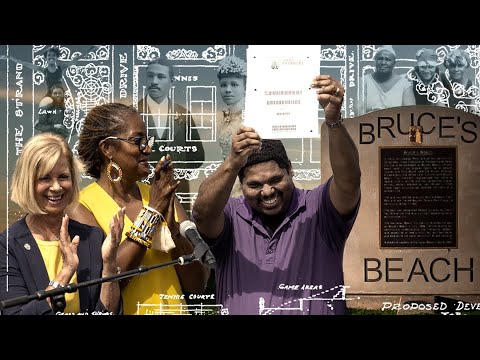
Watch this video on YouTube
Related Shows:
Civil Rights History Conservation in Alabama: https://wilderutopia.com/ecojustice-radio/conserving-civil-rights-history-and-biological-diversity-in-alabama/
Black-Indigenous History in the US: https://wilderutopia.com/ecojustice-radio/intersection-of-black-and-indigenous-resistance-justice-in-the-united-states-ep-123/
Podcast Website: http://ecojusticeradio.org/
Podcast Blog: https://www.wilderutopia.com/category/ecojustice-radio/
Support the Podcast: https://www.patreon.com/ecojusticeradio
Guest: Alison Rose Jefferson
Executive Producer: Jack Eidt
Host and Producer: Jessica Aldridge
Engineer and Original Music: Blake Quake Beats
Photo Credit: Alison Rose Jefferson’s iphone by Lisa Bartley ABC7 News LA – Bruce’s Beach in Manhattan Beach, CA
Published February 6, 2023, Updated March 1, 2023

